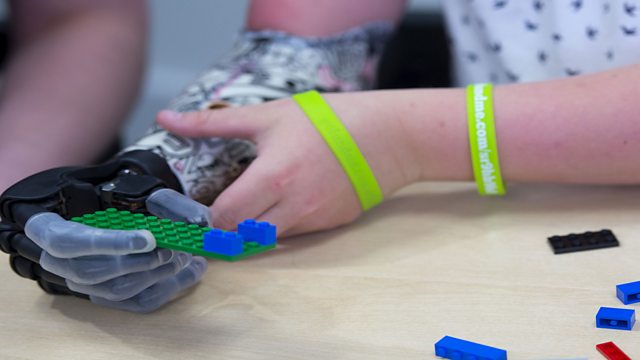Bionic Bodies for Superhuman Powers?
How advances in bionics is enhancing the human body, including a bionic eye for the blind.
The field of bionics has transformed medicine for centuries, as far back as the ancient Egyptians who created bespoke toes from wood and leather. During the 20th Century mechanical and electronic advances made heart pacemakers and more sophisticated prosthetic limbs possible.
Now, researchers are creating bionic eyes to help blind people see again. Neurosurgeon Jeffrey Rosenfeld, director of the Monash Institute of Medical Engineering in Australia, hopes to implant tiny βceramic micro-electrode tilesβ into the brainβs visual cortex of blind volunteers this year β bypassing the normal visual pathway. A digital camera mounted on a pair of glasses captures images which are then processed in a device about the size of a mobile phone. The resulting image is then transferred wirelessly to the tiles in the brain β the more tiles, the more detailed the image.
Such techniques designed to help people with disabilities could also be adopted by others wanting to enhance their own senses or performance. Anders Sandberg, senior researcher at the Future of Humanity Institute at Oxford University, ponders over the ethics of bionics. He supports morphological freedom β the right to modify our bodies β but also the right to say no.
(Photo: Bionic hand. Credit: Mark Runnacles/GettyImages)
Last on
More episodes
Broadcasts
- Wed 4 Jan 2017 19:32GMTΒιΆΉΤΌΕΔ World Service East and Southern Africa & West and Central Africa only
- Wed 4 Jan 2017 20:32GMTΒιΆΉΤΌΕΔ World Service Online, Australasia, Americas and the Caribbean, Europe and the Middle East & UK DAB/Freeview only
- Wed 4 Jan 2017 21:32GMTΒιΆΉΤΌΕΔ World Service South Asia & East Asia only
- Thu 5 Jan 2017 02:32GMTΒιΆΉΤΌΕΔ World Service Americas and the Caribbean
- Thu 5 Jan 2017 03:32GMTΒιΆΉΤΌΕΔ World Service Online, Europe and the Middle East & UK DAB/Freeview only
- Thu 5 Jan 2017 04:32GMTΒιΆΉΤΌΕΔ World Service East Asia & South Asia only
- Thu 5 Jan 2017 05:32GMTΒιΆΉΤΌΕΔ World Service Australasia
- Thu 5 Jan 2017 07:32GMTΒιΆΉΤΌΕΔ World Service Europe and the Middle East & East and Southern Africa only
Podcast
-
![]()
Health Check
Health issues and medical breakthroughs from around the world.


